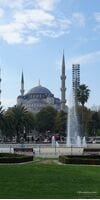The Blue Mosque or Sultanahmet Mosque / Sultan Ahmed Mosque (Turkish name: Sultanahmet Camii / Sultan Ahmet Camii) is a historical imperial mosque in Istanbul, which is the first mosque in the city, and is also considered an outstanding example of Islamic and world architecture.
The mosque is known primarily for its six minarets and interior decoration, which is considered a masterpiece.
The official name of the mosque is "Sultanahmet", which it received in honor of its donor Sultan Ahmed I. The second, and more common name "Blue", the mosque received from foreign travelers due to Iznik tiles in the dominant tones of blue, turquoise and green, which cover most of the interior of the mosque, and also because the half domes and the interior of the large dome of the mosque are also decorated with handmade works, mainly blue.
Today it is a functioning mosque, which is included in the UNESCO World Heritage List and attracts numerous tourists.
The mosque is located in the central part of the European side of Istanbul, in the Sultanahmet district.
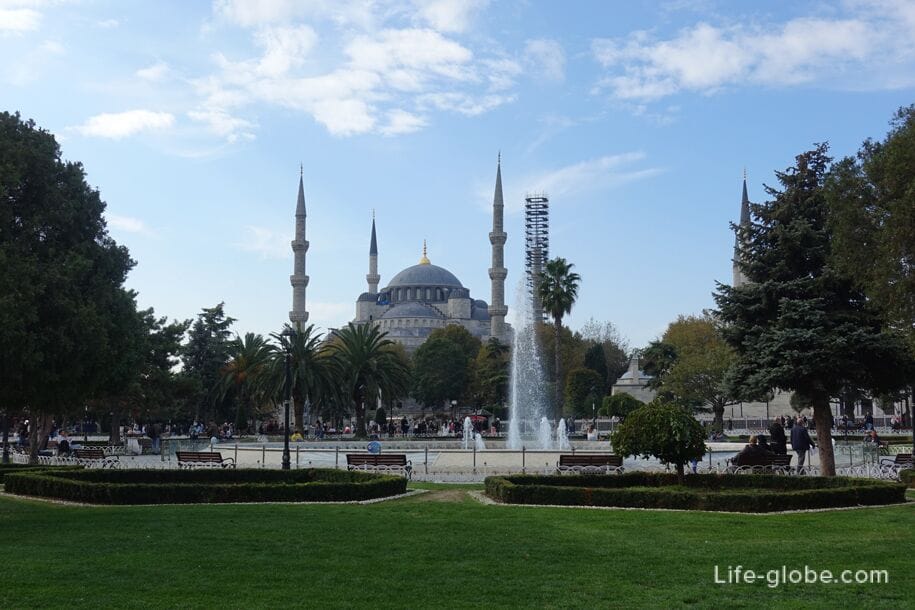
Sultanahmet Mosque was built in 1609-1616 by order of the Sultan of the Ottoman Empire Ahmed I in order to nourish the power and propitiate Allah after the authority of Turkey was undermined by crushing losses in the war with Austria and in parallel with Iran.
In addition, the construction of a new mosque was also necessary to raise the spirit of the people, since no imperial mosque had been erected in the city for 40 years before.
The construction was carried out with funds from the treasury, because, as the sultans had done before, they built mosques from military trophies, Ahmed I could not do it, since he had not won a single significant victory before.
After the construction, the Sultanahmet Mosque became the main mosque of Istanbul, and before that the main mosque of the city was Hagia Sophia Mosque, which was and is located opposite the Blue Mosque.
The Blue Mosque was built on the site of the palace of the Byzantine emperors and partly the hippodrome (now Sultanahmet Square). Most of the southern part of the mosque rests on the foundation, the arches of the old Grand Palace.
The architect of the mosque was Sedefkar Mehmet Agha, a student and chief assistant of one of the most famous Ottoman architects and engineers Sinan. Sedefkar Mehmet wanted to surpass his teacher and worked very hard on the works of the Blue Mosque. It should be noted that he was very successful in this; he created a masterpiece of his time, which still delights today.
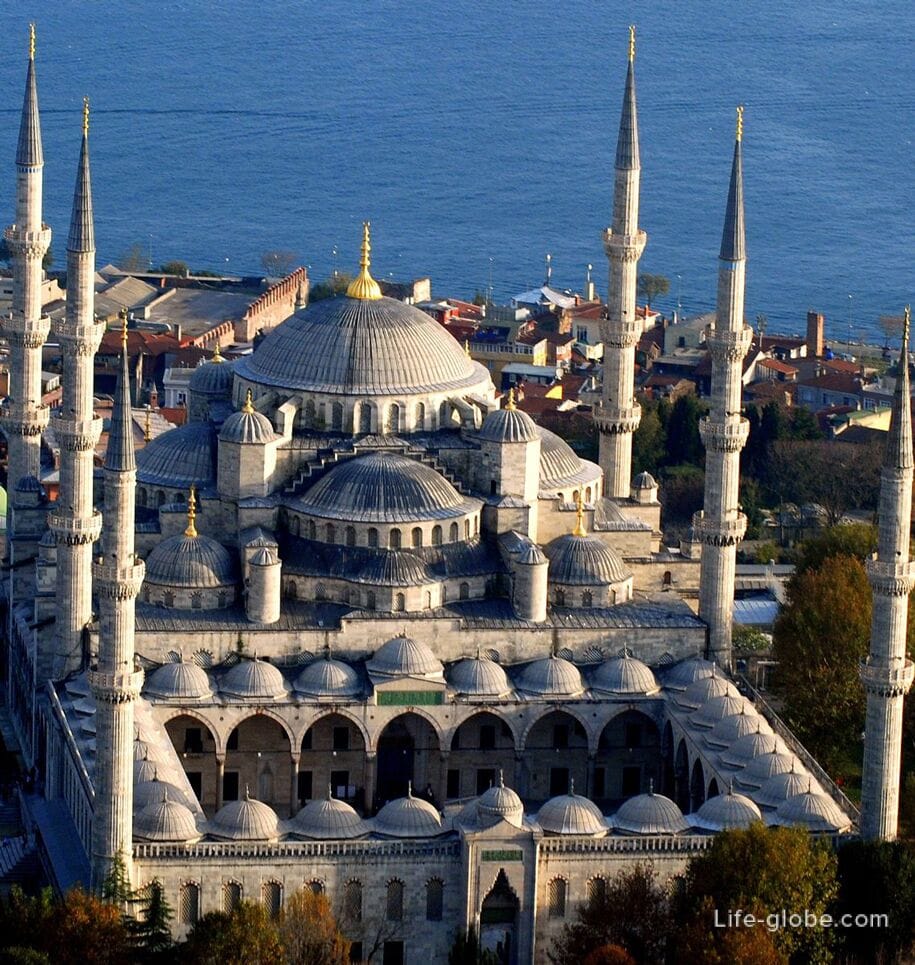
The Sultanahmet Mosque was and is a complex on the territory of which, in addition to the mosque itself with the Sultan's pavilion and courtyard, there were also fountains, madrasas (schools), a seminary, an imaret (charity canteen for the poor), a hospice, a bath (hamam), a market with rental premises (today the Arast bazaar) and the Sultan's mausoleum. Some of these buildings have not survived to this day.
During its history, the Blue Mosque complex has undergone reconstructions.
The mosque complex is surrounded by a wall with an entrance gate.
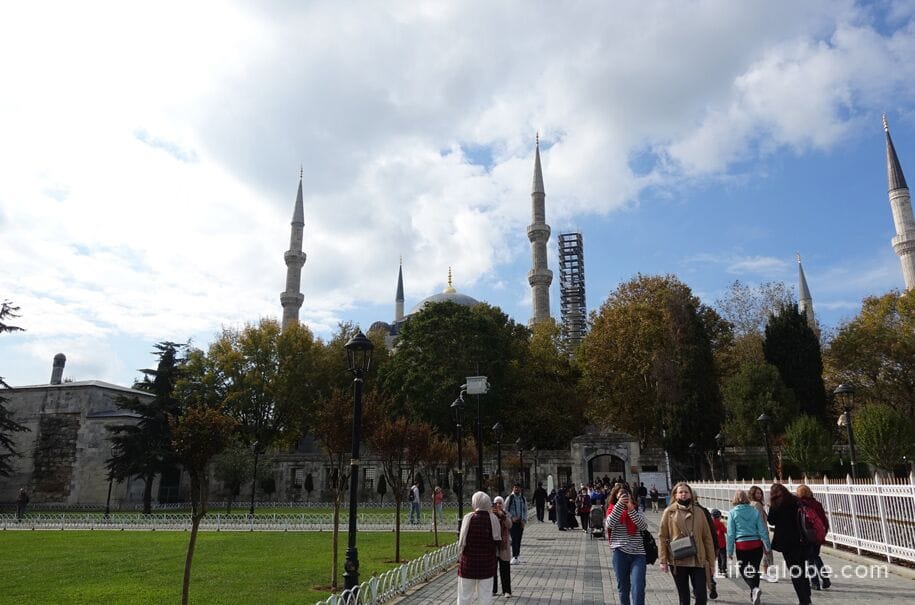
Architecture of the Blue Mosque
The architecture of the Blue Mosque combines two styles - classical Ottoman and Byzantine.
The mosque consists of a large prayer hall, united under the main domes, and an open courtyard in the northwest. The mosque also has secondary domes.
One of the main features of the mosque are six minarets (a type of towers in a mosque), four of which rise above the corners of the mosque, and the two lower minarets are located in the front corners of the courtyard. The four minarets around the mosque building have three balconies, and the minarets of the courtyard have two.
The construction of six minarets was unusual for Istanbul, then the imperial mosques had 4 minarets each. There is a legend connected with the 6th minarets, according to which the architect of the mosque misunderstood the sultan's request for "altın minareler" (golden minarets) as "altı minare" (six minarets). At that time, six minarets were a unique feature of the main Muslim al-Haram temple in Mecca and Sultan Ahmed I was criticized for his arrogance in erecting six minarets at the Blue Mosque, after which the Sultan ordered the construction of a seventh minaret in the mosque of Mecca.
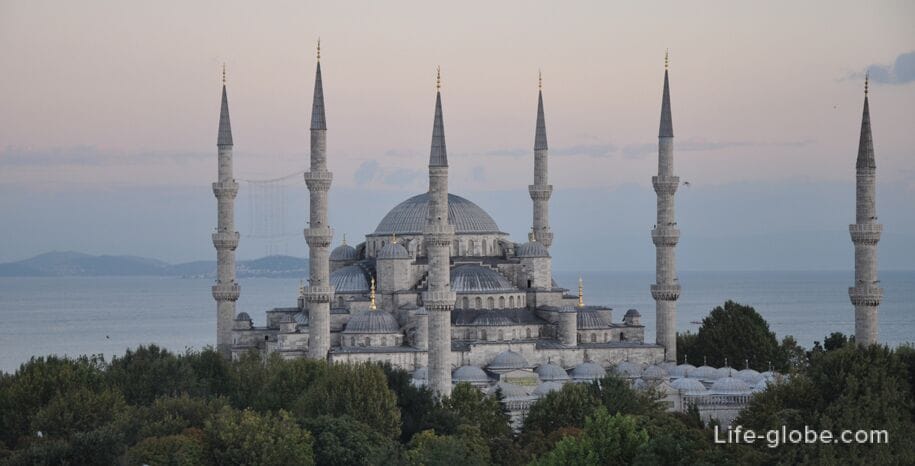
The mosque has an inner courtyard, which can be accessed through three entrances.
The facade of the spacious courtyard is built in the same way as the facade of the Suleymaniye Mosque.
The courtyard is surrounded by a continuous vaulted arcade (revak), which is decorated with domes.
In the center of the courtyard there is a hexagonal fountain.
The main entrance leads from the courtyard to the prayer hall (there are two additional side entrances), which is highlighted by the raised central dome of the portico, on the high drum of which a marble Quranic panel is installed.
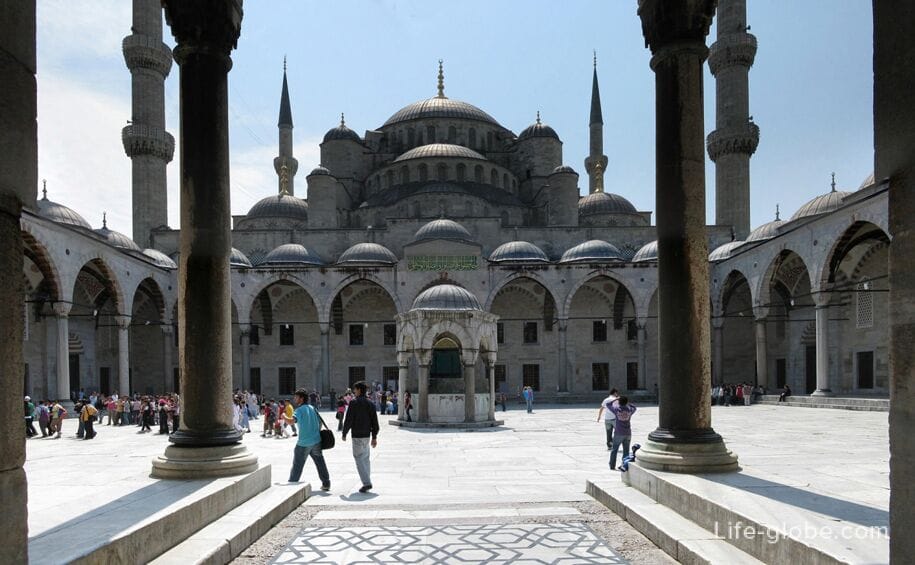
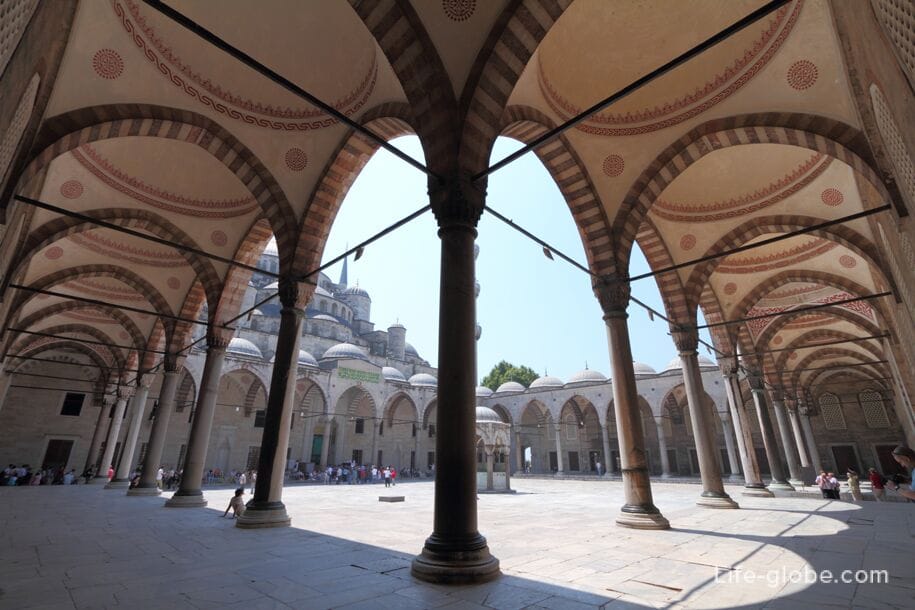
Interior of the Blue Mosque (prayer hall)
The prayer hall of the Blue Mosque is a large rectangle.
Inside, the hall is spacious and open, with an emphasis on the high central dome, which is supported by four huge columns with a diameter of 5 meters.
The interior of the mosque is lined with more than 20,000 handmade Iznik ceramic tiles made in Iznik (ancient Nicaea). The patterns of the mosque are dominated by floral motifs, including more than 50 thousand variations of images of tulips. The tiles on the lower levels have a traditional design, and on the gallery level their design becomes vivid with images of flowers, fruits and cypresses.
More than 200 stained glass windows with an intricate design let natural light into the hall. The hall is also illuminated by large chandeliers.
The decorations of the mosque hall also include verses from the Koran, many of which were made by Sayyid Qasim Gubari, who was considered the greatest calligrapher of his time.
The floors are covered with carpets, which are donated by believers and regularly changed as they wear out.
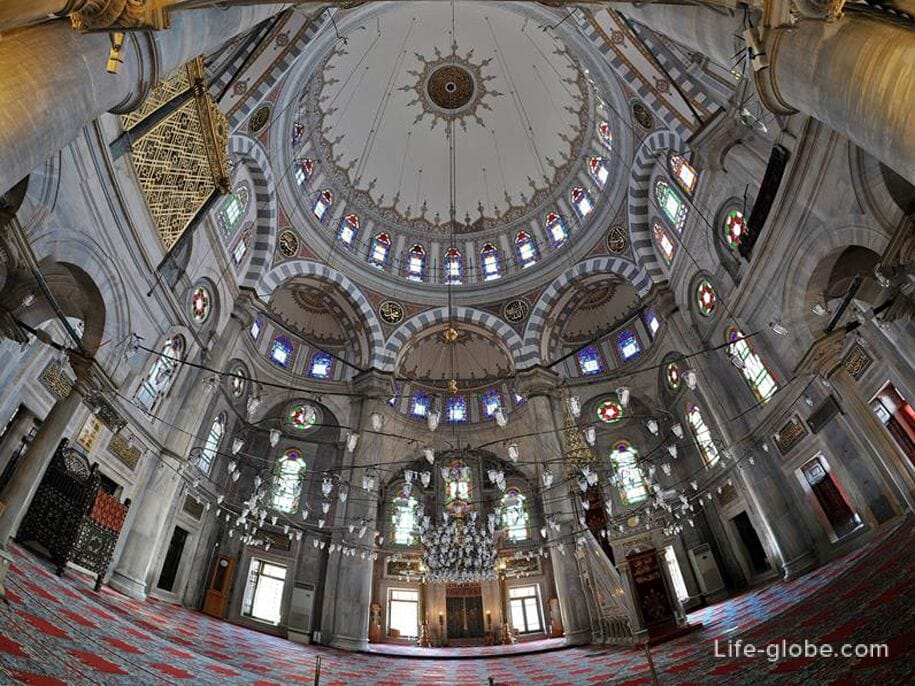
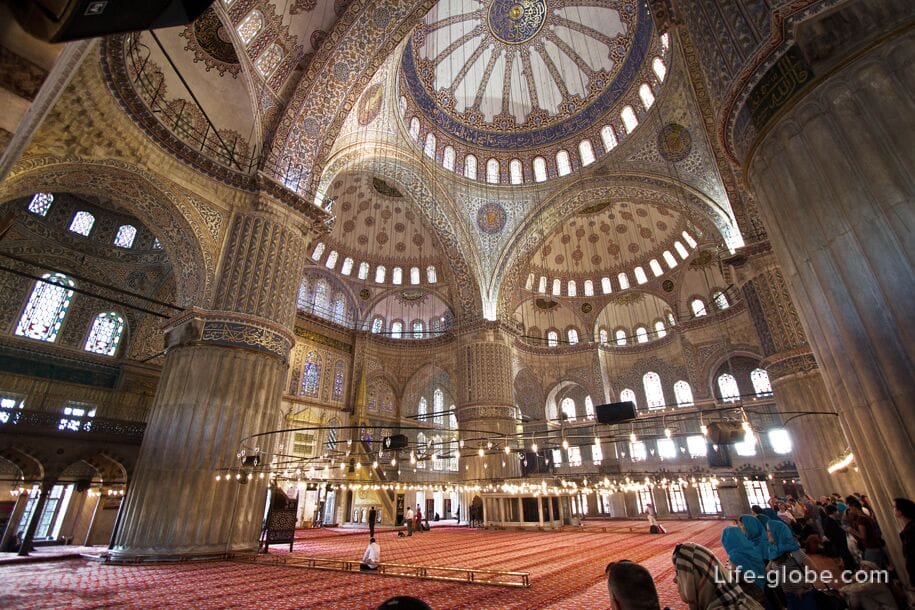
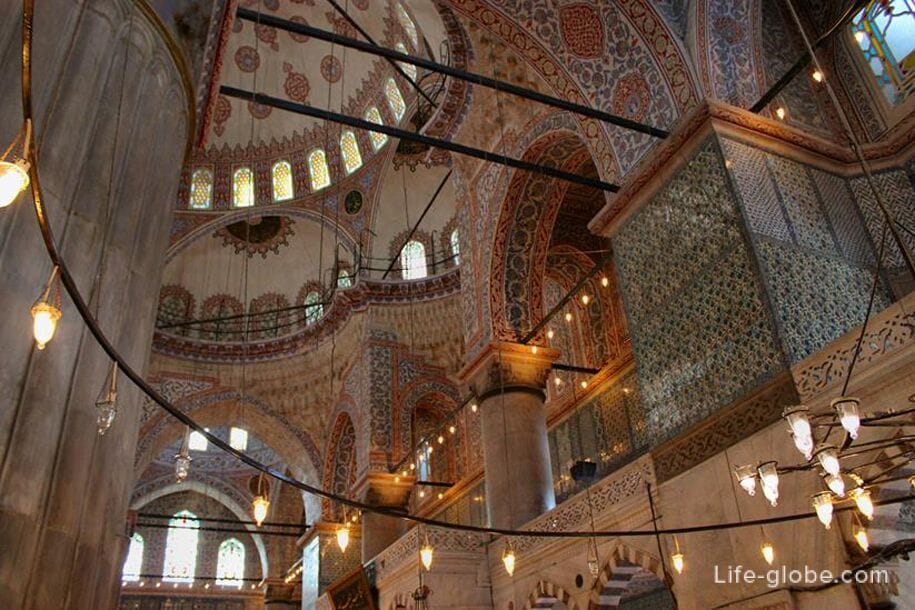
Photo of the dome of the mosque
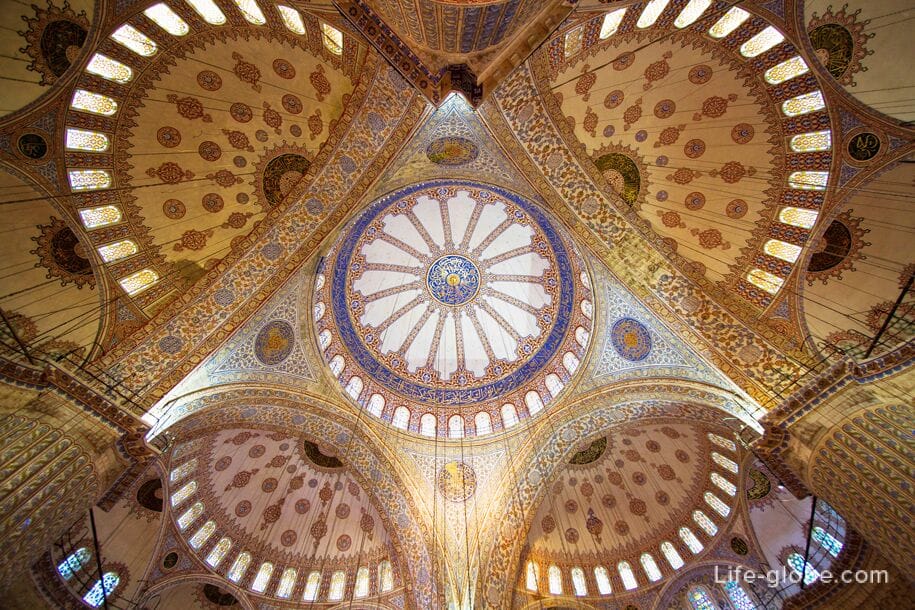
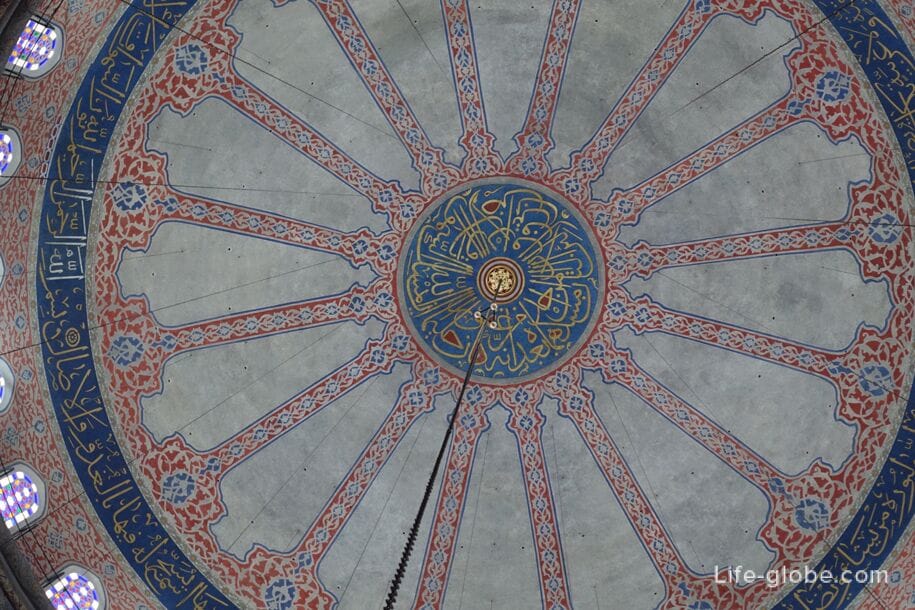
The most important element of the mosque's interior is the mihrab (direction of prayer, altar), made of finely carved and sculptured marble, with a stalactite niche and a double inscription above it.
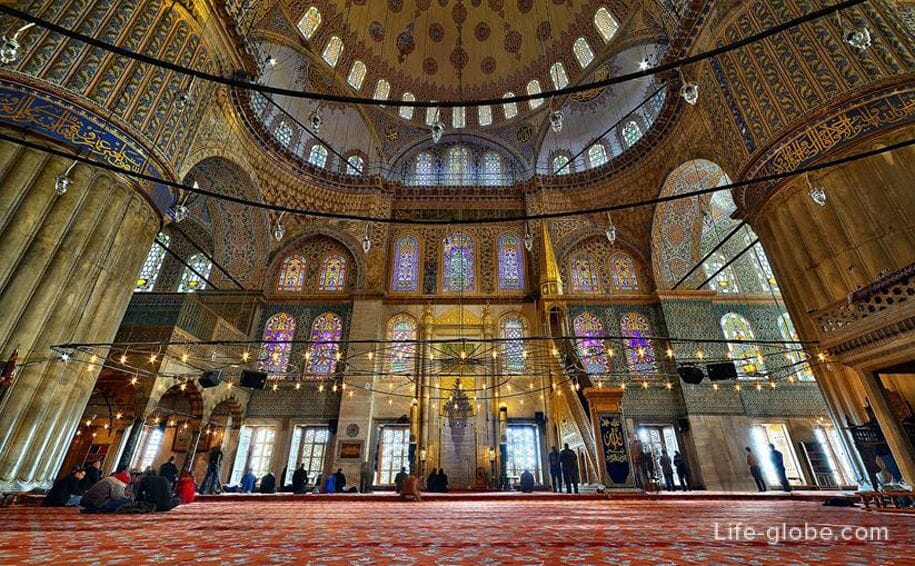

The Royal Kiosk is located in the southeast corner. It consists of a platform, a loggia and two small rooms for relaxation. From here there is access to the royal loggia in the south-eastern upper gallery of the mosque. These secluded rooms became the headquarters of the Grand Vizier during the suppression of the rebellious Janissary corps in 1826. The Royal Lodge (hünkâr mahfil) is supported by ten marble columns. He has his own mihrab.
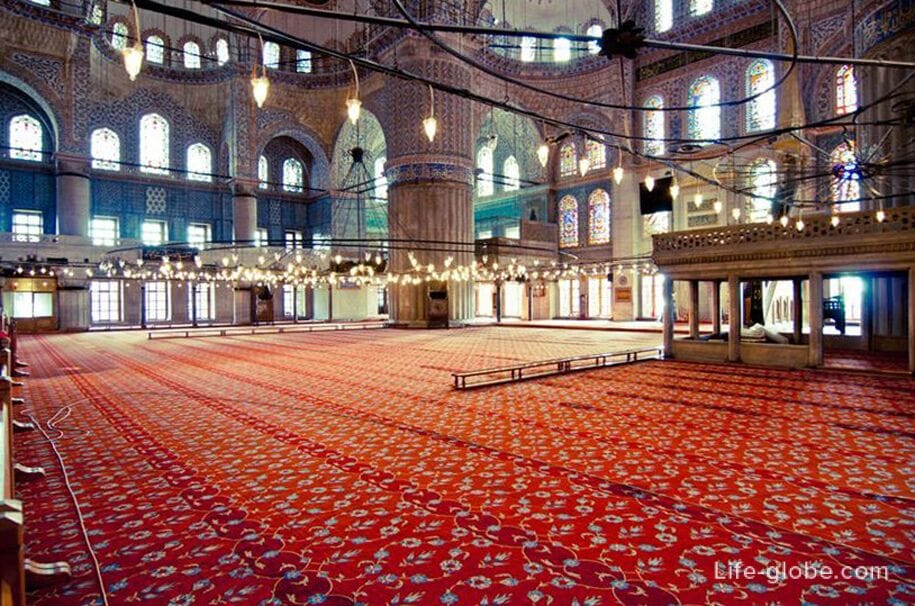
Many of the lamps inside the mosque were once covered with gold and precious stones. Among the glass bowls of chandeliers, one could find ostrich eggs for repelling spiders and insects, and crystal balls. All these ornaments were looted or given to museums.
Near the Blue Mosque
Next to the mosque, which is part of a single complex, there is a mausoleum (Sultan Ahmet Türbesi), in which Sultan Ahmed I, his wife and children are buried.
The construction of the tomb-mausoleum began after the death of the sultan and lasted three years.
Now other representatives of the Ottoman dynasty are also buried in the tomb-mausoleum. More about the mausoleum of Sultan Ahmed I...

Arasta Bazaar (Arasta Çarşısı), which is one of the oldest markets in Istanbul and now represents one small street near the Blue Mosque.
On both sides of the street there are cozy small shops selling things, carpets, dishes, Turkish goods, souvenirs, etc. Learn more about the Arast Bazaar...
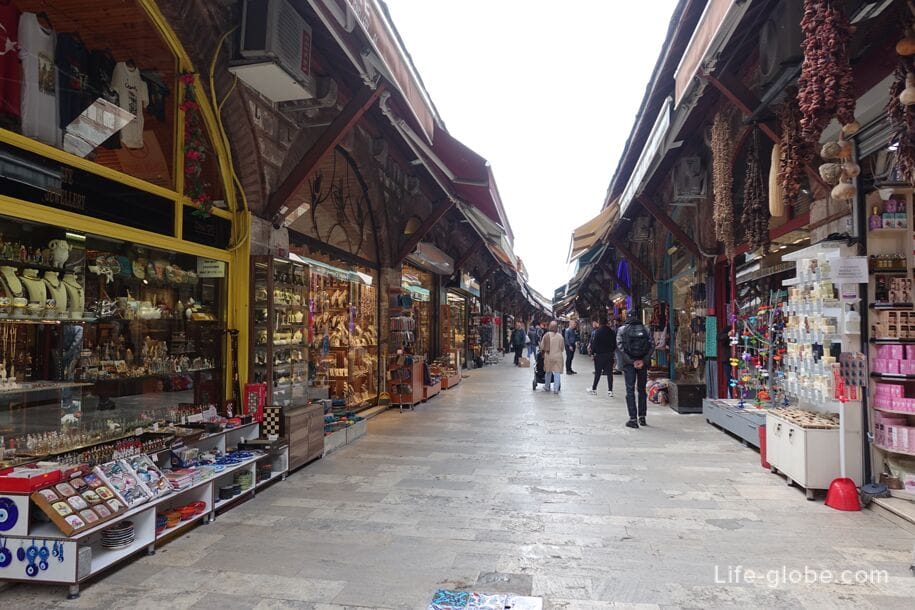
From the Arast Bazaar there is an exit to the Museum of mosaics of the Grand Palace (Büyük Saray Mozaikleri Müzesi) with an exposition of mosaics from the time of the Byzantine Empire (period 450-550 AD), discovered during excavations at the site of the Grand Palace of Constantinople.
Entrance to the museum is paid. Also in the mosaic museum there is a museum map of Istanbul (Museum Pass Istanbul) and a museum and tourist map Istanbul E-pass. More about the Museum of mosaics of the Grand Palace...
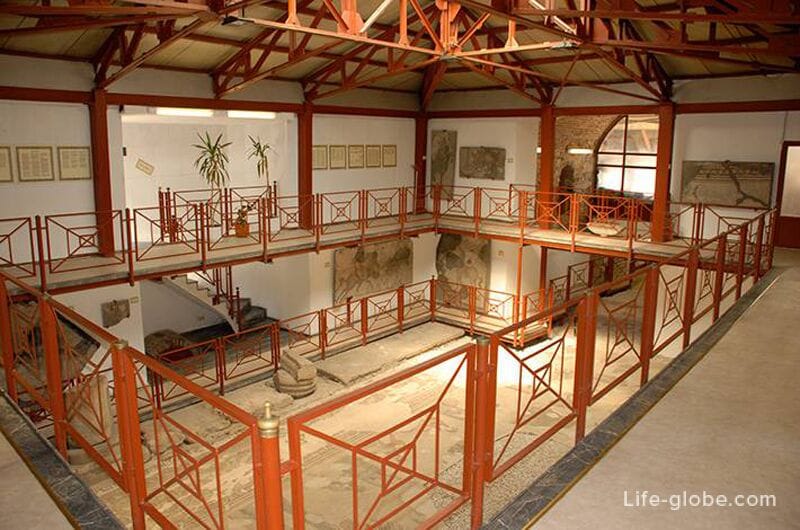
Practical information
The Blue Mosque is located on the European side of Istanbul, in the old part of the city, in the Sultanahmet district, near the Hagia Sophia Mosque and near the Topkapi Palace complex.
Address of the Blue Mosque: Sultan Ahmet, Atmeydanı Cd. No:7, 34122 Fatih/Istanbul, Turkey.
Coordinates of the Blue Mosque: 41°00'19.0"N 28°58'36.0"E (41.005278, 28.976667).
You can get to the Blue Mosque on foot from the ferry piers near the Galata Bridge; from the tram stop T1 "Sultanahmet"; from the metro station Vezneciler (green line M2) on foot about 1.8 kilometers. You can also get there by taxi, rented car, or by taking a tour on the Istanbul Hop-On Hop-Off tour bus (there are tickets for 1, 2 or 3 days).
Tickets for the Istanbul sightseeing bus can be purchased here →
The mosque is open to visitors at any working time, except for prayer (prayer) hours. Since this is a functioning mosque, it should be visited with a naked woman covered; as well as with covered knees and shoulders (not in T-shirts and shorts, women + short skirts), both men and women.
When entering the main hall of the mosque, you must take off your shoes.
Entrance to the Blue Mosque, its territory and the Sultan's tomb is free (free).
Blue Mosque website: sultanahmetcamii.
You can also visit and (or) see the Blue Mosque with one of the excursions in Istanbul
All accommodation facilities in Istanbul, including in the historical center, on the European and Asian sides of the city, can be viewed and booked here




